Algiers is located in the northern part of Algeria, nestled at the northern foothills of the majestic Tell Atlas Mountains. It lies between the bays of Oued El Harrach and Oued Mazafran, situated on a hillside facing the Bay of Algiers, with the Bouzareah Mountains at its back, forming a natural amphitheater. South of Algiers, beyond the Tell Atlas Mountains, stretches the world-famous Sahara Desert.
The city enjoys a mild climate year-round, with lush greenery, abundant forests, and flowers blooming throughout the seasons. From elevated viewpoints, the city offers breathtaking views—lush greenery in the foreground and the distant horizon where the sea meets the sky. Its scenic beauty has earned it the nickname “Garden City.”
Algiers seamlessly blends modern high-rise buildings with mosques and Catholic churches. Many houses are built along the slopes, layering and winding through the hills, giving the city a jewel-like sparkle along the southern coast of the Mediterranean. On the hill of Bouzareah stands the Roman-style Basilica of Our Lady of Africa, a grand structure offering panoramic views of the city and the sea.
Most buildings in Algiers are painted white, often merging with the Mediterranean mist, creating a mesmerizing scene. This distinctive appearance has earned the city another title—“The White City.”

In Arabic, the words for Algiers and Algeria are derived from the same term, meaning “white islands.” There is a beautiful local legend about the origin of this name. Long ago, a group of Arab pioneers, after a long and challenging journey, arrived at this place. Unsure of where they were, they saw small islands scattered across the sea, with waves crashing against the rocky shores, creating layers of white foam. One of them exclaimed, “Al-Jazā’ir! Al-Jazā’ir!” meaning “Look! Those white islands.” Since then, the name has endured.
Algiers is a historic city in North Africa, serving as a key Mediterranean crossroads for centuries. In the 2nd century BCE, Phoenicians settled here and built a port. Later, the Romans established a city named Icosium. In the 4th century, the city was damaged by the Vandals. By the 7th century, the Arabs developed it into a thriving trade port. In the 10th century, King Bologhine Ibn Ziri founded a new city called Al-Jazā’ir. It became the capital of the Emirate of Algiers in the 15th century and flourished under the Ottoman Empire in the 17th century, reaching a population of 100,000.
On July 1830, French colonial forces captured the city, and during World War II, Algiers served as the headquarters for the Allied forces in North Africa. Algeria officially gained independence on July 3, 1962, and Algiers was declared the capital.
Walking through the streets of Algiers, one encounters two distinct styles: the new and the old city. The new city, built along the coastline and nestled against the hills, is marked by winding roads and a blend of European architectural styles. It boasts colonnades, intricate balconies, and shuttered doors and windows, giving it the feel of a modern urban center.
Surrounded by greenery, the “People’s Palace,” which serves as the Presidential Palace, is located in the new city. At the heart of the city lies a square named after the national hero Emir Abdelkader. Modern landmarks include the Aurassi Hotel and the Moorish-style Grand Post Office. In the western suburbs, the Pine Club serves as an international conference center, with the Sheraton Hotel—built by the China State Construction Engineering Corporation—standing as its signature building. In the southern suburbs, the Olympic Sports Complex is one of the most modern stadiums in Africa.
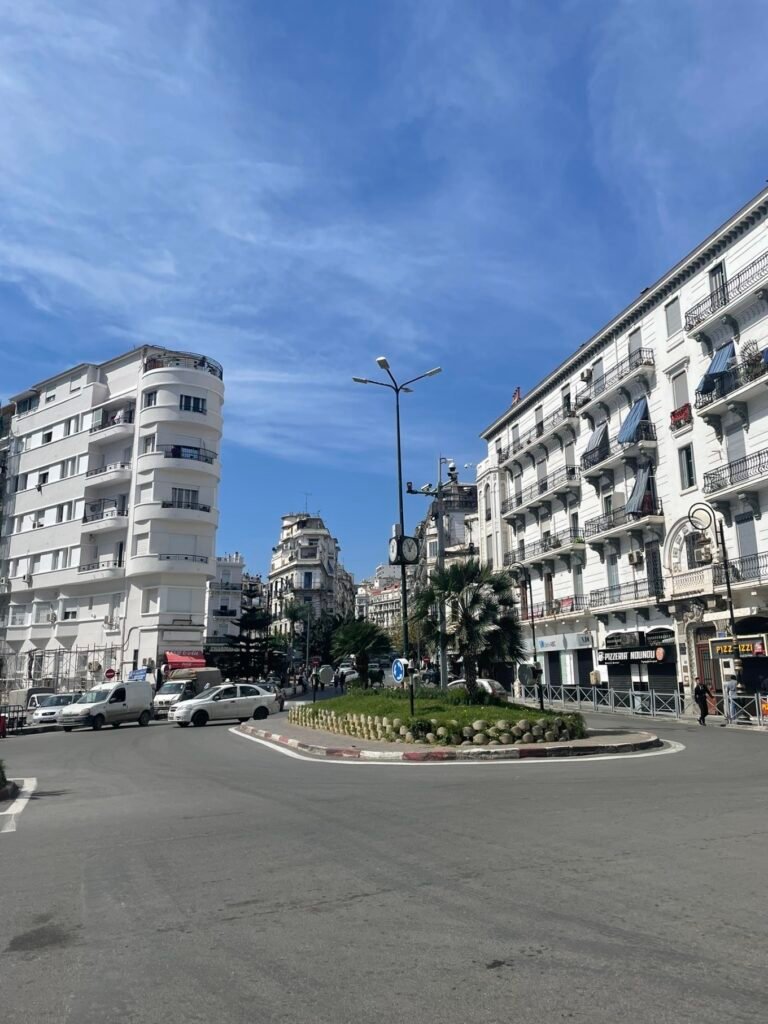
Castle Number 23
The castle was built in 1576 during the French colonial period. After the French colonization began in 1830, it was converted into a refuge for young women, an American consulate office, a ducal residence, and finally a municipal library. After Algeria gained independence, the castle was taken over by local residents, causing various degrees of damage. In 1980, Algeria’s Ministry of Culture took measures to transform it into a historical site, officially naming it the Algerian Rais Cultural Arts Center. It was restored from 1987 to 1993 and opened to the public in 1994.
When I visited today, there was an art exhibition going on, which required a ticket costing 200 DA. While the art itself wasn’t the main draw for me, the architecture was. Inside, you could see the castle’s former opulence through intricately carved stone columns, wooden ceiling panels with paintings, and tiled wall decorations. Unfortunately, many of the original furnishings and decorations have been lost due to the impact of wars, which is a real shame.


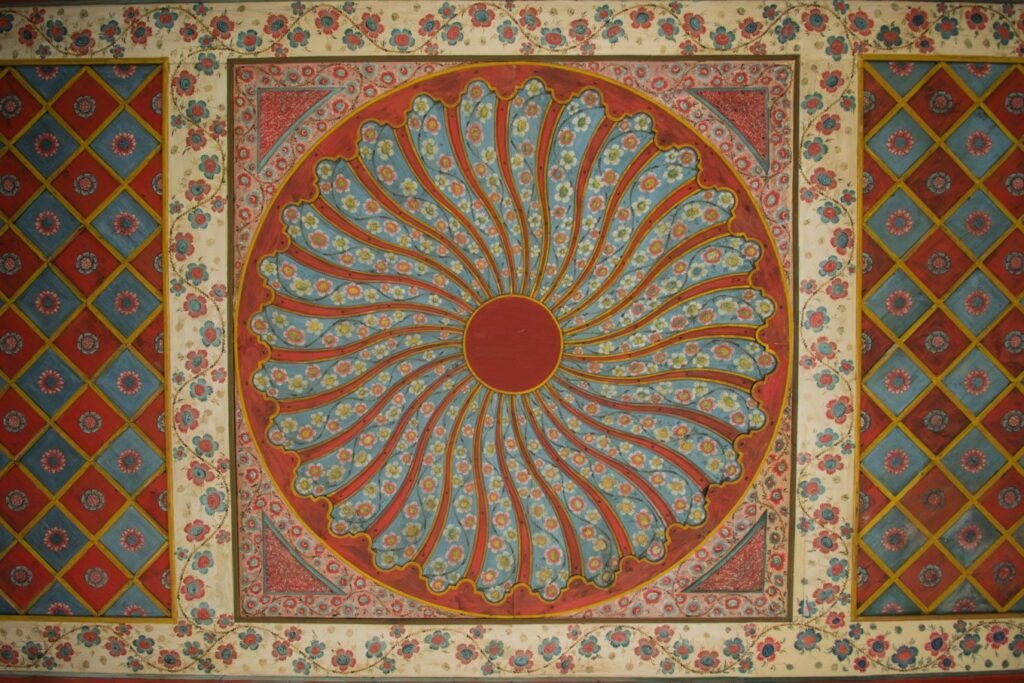
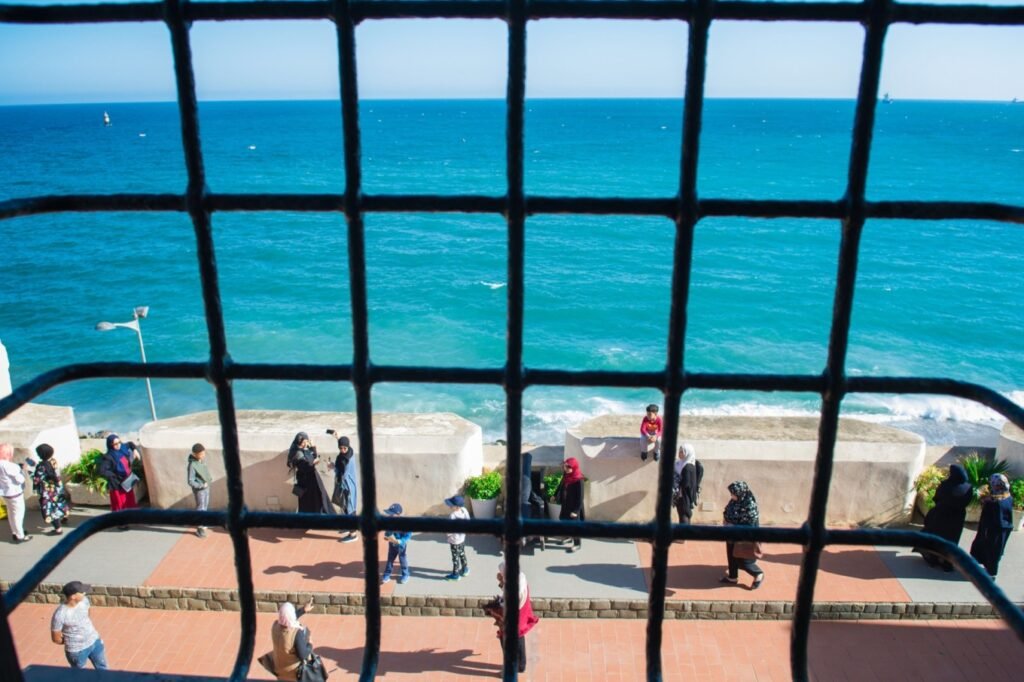
Didouche Avenue is buzzing with commercial vibes. On this pedestrian street, you can chill with coffee, grab a meal, have some snacks, or enjoy afternoon tea—it’s super laid-back and relaxing. There’s also a local flower shop selling plants and flowers nearby, so you can enjoy some greenery while you stroll. Along the street, you’ll find artists sketching portraits: black-and-white for 3000 DA and colored for 4000 DA, and they’re really focused on their work. Both sides of the street are lined with souvenir shops, clothing stores, and more, making it a great spot for eating, shopping, and snapping photos.
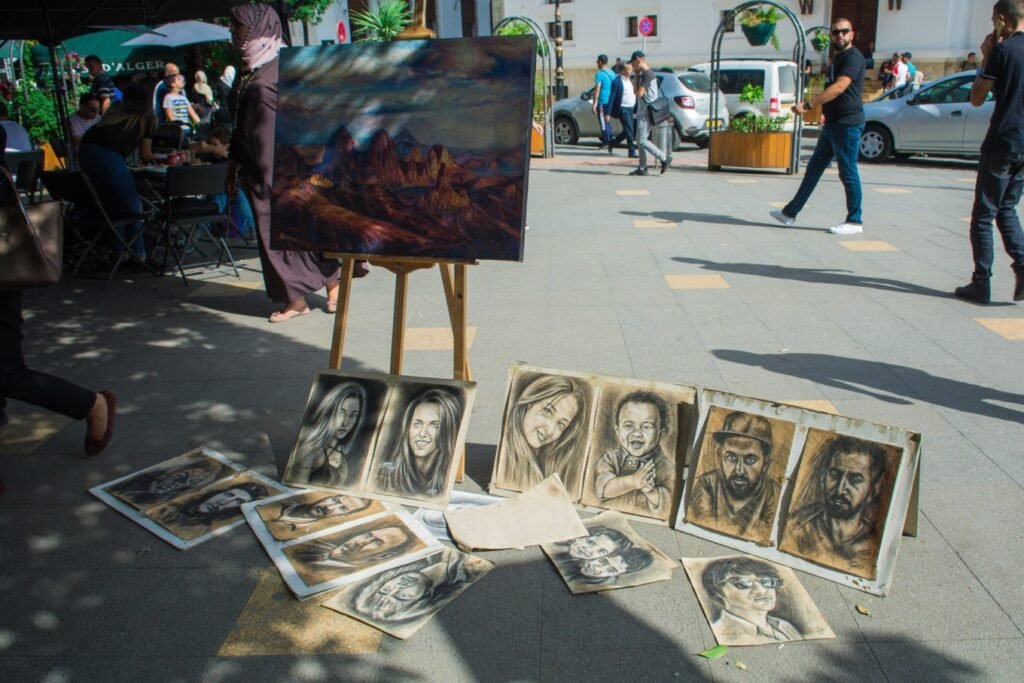
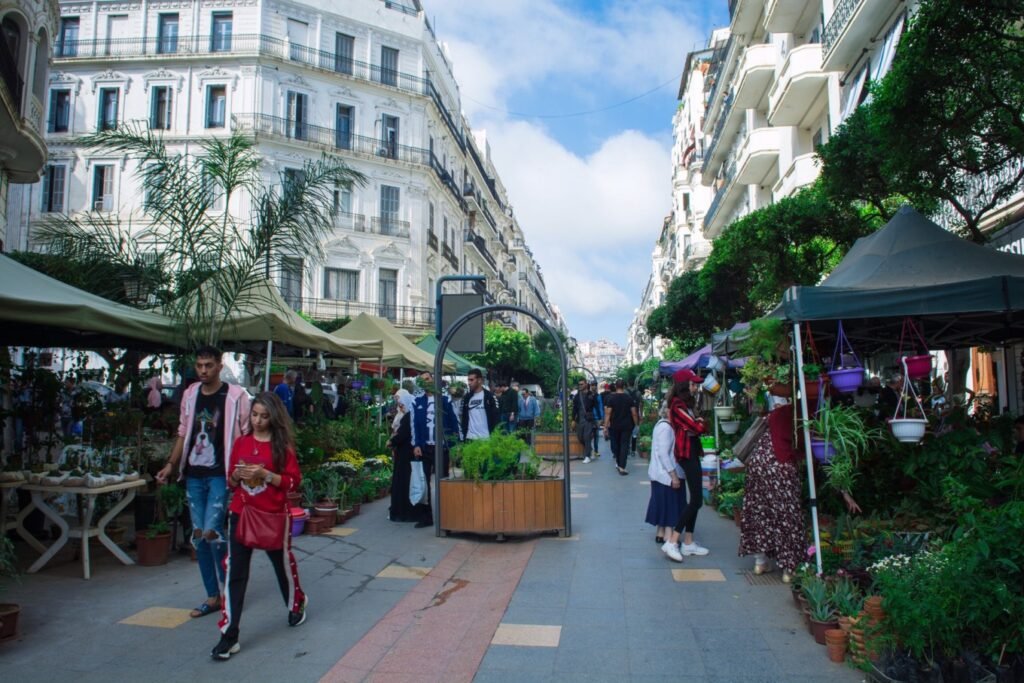
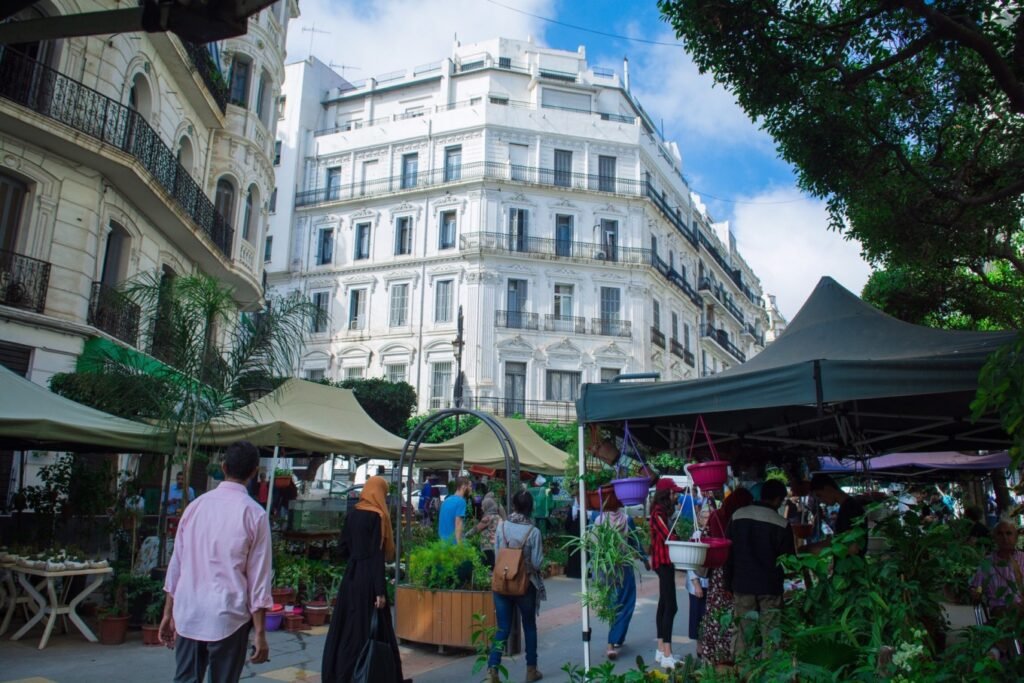

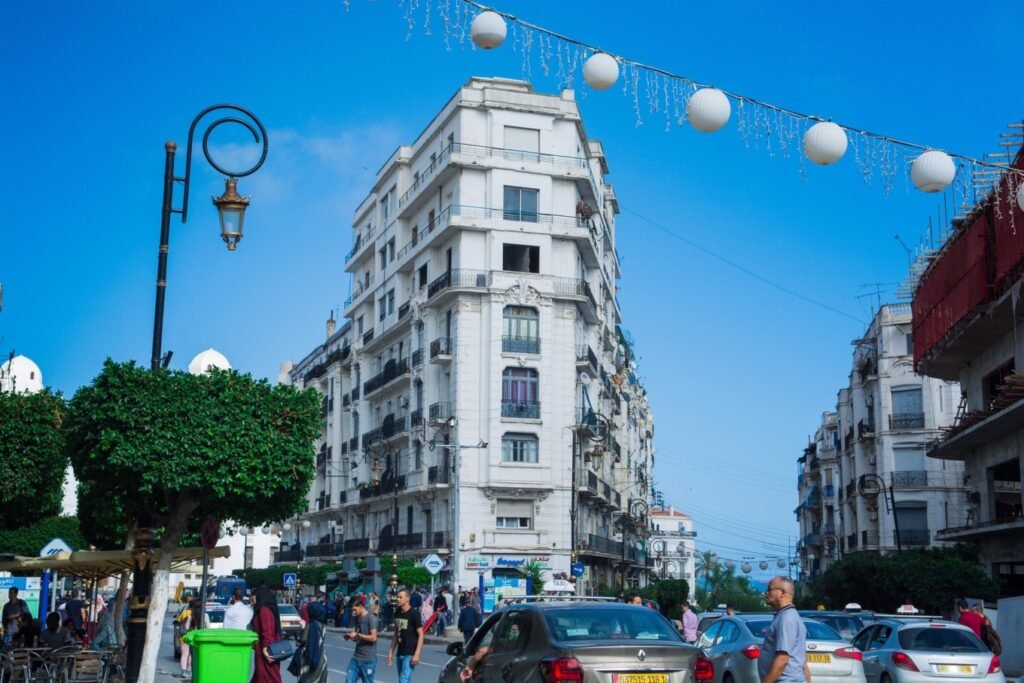
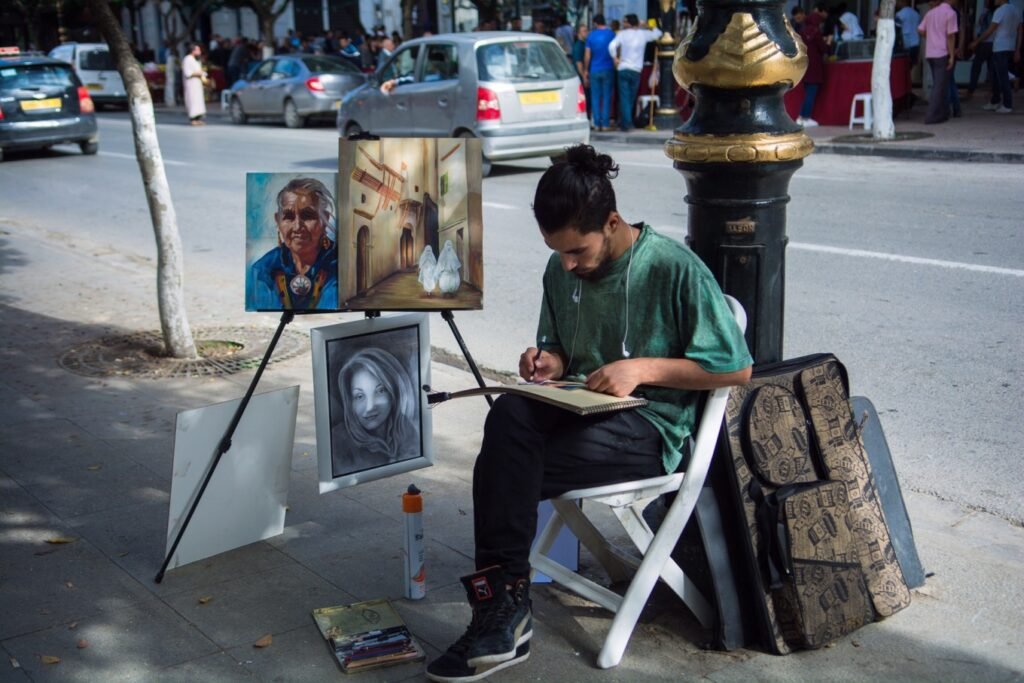
Located in the northeastern part of the city, the Kasbah is Algiers’ most renowned historic district. Built in the 17th century on the ruins of an Ottoman fortress, it became a residential area for Arabs. The houses, typically two or three stories high, are constructed with lightly carved stone along the slopes, reflecting a distinct Arab architectural style with their timber and mud structures and interconnected rooftops.
The narrow streets crisscross through the neighborhood, winding and intertwined, creating a dense maze. Amid these traditional homes, the remnants of ancient fortresses and the rounded domes of mosques stand tall, making a striking impression. Many streets are stairways, crowded with bustling pedestrians and lined with shops displaying an array of handcrafted items rich in cultural heritage. Vendors fill the alleys, their shouts and the sounds of haggling echoing above the crowds, creating a lively atmosphere.
A morning or evening stroll through the Kasbah immerses visitors in the enticing aromas of snacks and tea from local eateries. The rhythmic calls to prayer resonate from the towering minarets, transporting one into a world of wonder. The Kasbah is an excellent place to explore Arab architecture, culture, religion, and traditions, drawing visitors from all corners of the globe with its unique charm.
Algeria is a quintessential Arab nation, yet walking through the streets of Algiers reveals a blend of tradition and modernity. The young people are fashionably dressed, and the streets feature an eclectic mix of jeans, long coats, white robes, and veils fluttering harmoniously. Islamic mosques are nestled among European-style buildings, each carving out its own spiritual and physical space.
Here and there, new structures subtly connect with older ones, blending the past and present into a harmonious landscape. Beneath the shadow of a Christian church, elderly men in traditional Arab attire gather and chat. Inside old Arab coffeehouses, Western pop music plays in the background. In Algiers, tradition coexists with modernity, faith blends with fashion, and the old merges with the new, creating a unique harmony that time has quietly shaped.



